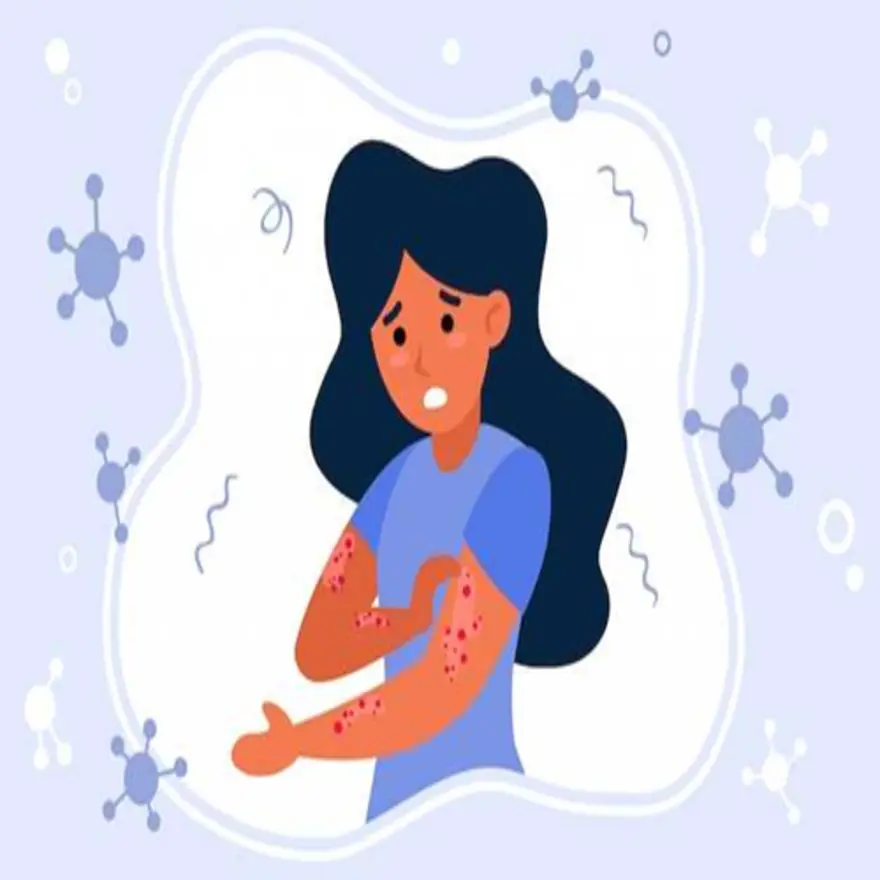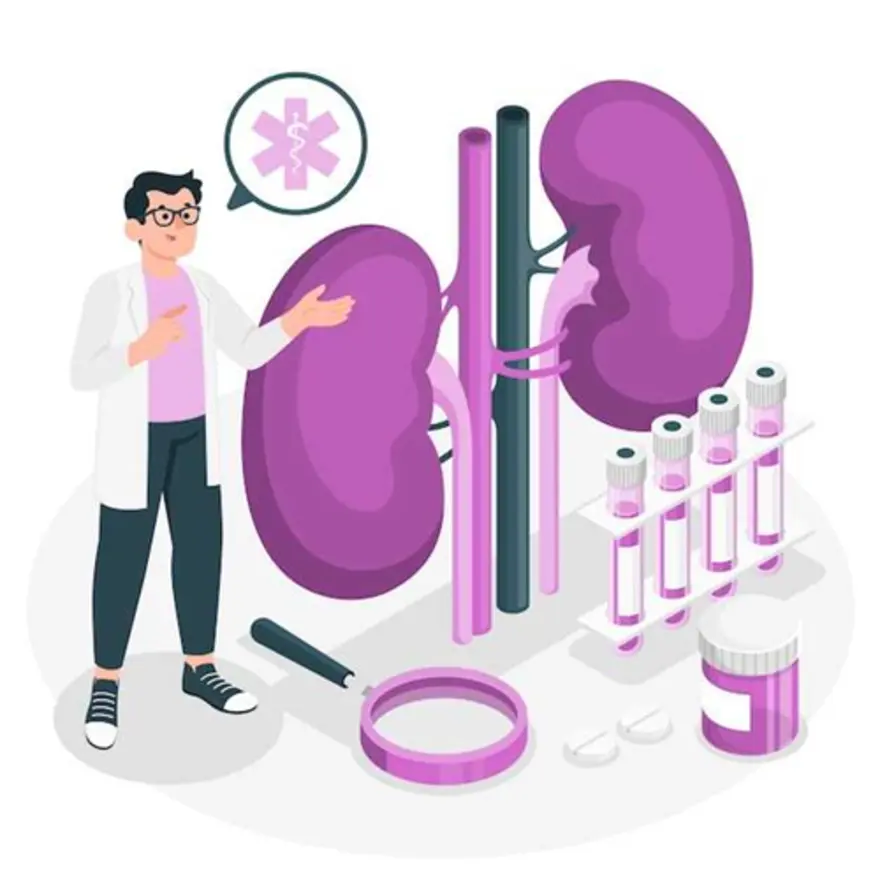Preventive Healthcare
Understanding Pneumonia: Symptoms, Treatment and Prevention
6737 Views
0

What is pneumonia?
Pneumonia is a common respiratory infection affecting the lungs. The air sacs in one or both lungs get inflamed and may fill up with fluid or pus (purulent material). This can cause cough with phlegm or pus, fever, chills, and difficulty breathing. It can be caused by various organisms such as bacteria, viruses, and fungi. Pneumonia can be mild or severe, requiring medical attention.
What’s the difference between viral and bacterial pneumonia?
While all pneumonia is inflammation caused by an infection in your lungs, you may have different pneumonia symptoms depending on whether the root cause is a virus, bacteria, or fungi.
Viral pneumonia is caused by viruses like influenza or respiratory syncytial virus, while bacterial pneumonia results from bacterial infections like Streptococcus pneumoniae. Viral pneumonia is often milder and may resolve on its own, while bacterial pneumonia can be more severe, require antibiotics, and can lead to hospitalisation. Chest X-rays can help distinguish between them, guiding treatment choices.
What are the types of pneumonia?
Pneumonia is a common and potentially serious respiratory illness that is classified into different types based on the causative agents and clinical characteristics. Here are some of the main types of pneumonia:
- Bacterial Pneumonia: This is one of the most common forms of pneumonia and is typically caused by bacteria such as Streptococcus pneumoniae, Haemophilus influenzae, or Staphylococcus aureus. Bacterial pneumonia can range in severity from mild to severe and often comes with symptoms like high fever, productive cough, and chest pain.
- Viral Pneumonia: Viruses like influenza (the flu), respiratory syncytial virus (RSV), and COVID-19 can cause viral pneumonia. Viral pneumonia tends to be less severe than bacterial pneumonia and is characterised by symptoms like a dry cough, high fever, and shortness of breath.
- Fungal Pneumonia: Fungal pneumonia is typically caused by fungi like Candida, Aspergillus, or Pneumocystis jirovecii. It is more common in individuals with weakened immune systems, such as those with HIV/AIDS or organ transplant recipients.
- Atypical Pneumonia: This form of pneumonia is often caused by atypical bacteria like Mycoplasma pneumoniae or Chlamydophila pneumoniae. It tends to have milder symptoms and a more gradual onset, often resembling a cold or flu.
- Aspiration Pneumonia: This occurs when foreign substances, such as food, liquids, or vomit, get inhaled into the lungs, leading to infection and inflammation. It is more common in individuals with swallowing difficulties, neurological conditions, or impaired consciousness.
- Hospital-Acquired Pneumonia (HAP): HAP develops during or after a hospital stay and is often caused by multidrug-resistant bacteria due to the hospital environment.
- Community-Acquired Pneumonia (CAP): CAP is contracted outside of healthcare facilities and can be caused by a variety of pathogens. It is generally less severe than HAP.
- Aspiration Pneumonia: Aspiration pneumonia occurs when foreign materials, such as food, stomach acid, or saliva, enter the lungs, leading to infection and inflammation.
Who is most at risk of getting pneumonia?
Pneumonia can affect individuals of all ages, but certain groups are more susceptible to the infection. The most at-risk populations include:
- Young children and the elderly: Their immune systems are often weaker, making them more vulnerable.
- People with weakened immune systems: Those with conditions like HIV/AIDS, cancer, or are on immunosuppressive medications are at higher risk.
- Smokers: Smoking damages the respiratory system, making it easier for bacteria or viruses to cause pneumonia.
- Individuals with chronic health conditions: Conditions like asthma, chronic obstructive pulmonary disease (COPD), diabetes, and heart disease can weaken the body's ability to fight infections.
- People in close quarters: People in crowded settings, such as nursing homes or prisons, are at higher risk due to increased exposure to potential pathogens.
How common is pneumonia?
Anyone can get pneumonia. Pneumonia is a prevalent respiratory infection affecting a significant number of individuals worldwide. Pneumonia causes more than 50,000 deaths and more than a million hospitalisations each year. This is the most common cause of death in developing countries.
What are the signs and symptoms of pneumonia?
Pneumonia, an inflammatory condition affecting the lungs, manifests differently across age groups.
Symptoms of bacterial pneumonia
Bacterial pneumonia symptoms may develop suddenly or gradually. It includes:
- High fever (up to 105 F or 40.55 C).
- Cough with yellow, green or bloody mucus.
- Tiredness (fatigue).
- Rapid breathing.
- Shortness of breath.
- Rapid heart rate.
- Sweating or chills.
- Chest pain and/or abdominal pain, especially with coughing or deep breathing.
- Loss of appetite.
- Bluish skin, lips or nails (cyanosis).
- Confusion or altered mental state.
Symptoms of viral pneumonia
Viral pneumonia symptoms usually develop over several days. The pneumonia symptoms may be similar to that of bacterial pneumonia or you might additionally observe:
- Dry cough.
- Headache.
- Muscle pain.
- Extreme tiredness or weakness.
Symptoms of pneumonia in young children
Babies and newborns may not show any pneumonia symptoms or it may differ from adults. Generally, pneumonia symptoms in baby include:
- Fever, chills, general discomfort, sweating/flushed skin.
- Cough.
- Difficulty breathing or rapid breathing (tachypnea).
- Loss of appetite.
- Vomiting.
- Lack of energy.
- Restlessness or fussiness.
Pneumonia symptoms in adults over 65
Pneumonia symptoms in adults over 65 can be subtle and may include confusion, a lower-than-normal body temperature, and a persistent cough. Adults are at a higher risk of developing severe complications from pneumonia, making early detection crucial for effective treatment. Older adults may experience:
- A sudden change in mental state.
- Low appetite.
- Fatigue.
What causes pneumonia?
Pneumonia is primarily caused by infection, commonly stemming from bacteria, viruses, fungi, or other microorganisms. Inhaled airborne pathogens reach the lungs, triggering an inflammatory response that leads to the air sacs filling with fluid or pus. Bacterial pneumonia is often caused by Streptococcus pneumoniae, while viruses such as influenza and respiratory syncytial virus can induce viral pneumonia. Common illnesses that can lead to pneumonia include:
- Common cold (rhinovirus)
- COVID-19 (SARS-COV-2)
- The flu (influenza virus)
- Human metapneumovirus (HMPV)
- Human parainfluenza virus (HPIV)
- Legionnaires’ disease
- Mycoplasma pneumonia bacteria
- Pneumococcal disease
- Pneumocystis pneumonia
- Respiratory syncytial virus (RSV)
Is pneumonia contagious?
Yes, pneumonia can be contagious. The infectious nature depends on the underlying cause. Bacterial pneumonia, which is often caused by Streptococcus pneumoniae, can spread through respiratory droplets from infected individuals. Viral pneumonia, resulting from viruses like influenza or respiratory syncytial virus, is also contagious. However, not all types of pneumonia are infectious; some cases are caused by inhaling chemical irritants or aspirating food into the lungs. Proper hygiene practices, vaccination, and avoiding close contact with infected individuals can help reduce the risk of transmission.
How is pneumonia diagnosed?
Pneumonia is diagnosed through a combination of clinical evaluation, medical history review, and diagnostic tests. Healthcare providers often perform chest X-rays to detect lung abnormalities, and blood tests to identify the causative agent—whether bacterial or viral. Additionally, sputum cultures, CT scans, and sometimes bronchoscopy may be used for a more precise pneumonia diagnosis. Clinical symptoms such as persistent cough, difficulty breathing, and fever also guide healthcare professionals in assessing and confirming pneumonia.
What tests will be done to diagnose pneumonia?
Diagnosing pneumonia involves a comprehensive approach, combining clinical evaluation, medical history, and various diagnostic tests. Your healthcare provider may conduct tests to assess your lungs for infection, evaluate their functionality, and analyse fluids to identify your pneumonia causes. Common tests include:
- Chest X-rays: These images provide a visual examination of the lungs, helping identify areas with inflammation, consolidation, or infiltrates, which are indicative of pneumonia.
- Blood Tests: A complete blood count (CBC) can reveal an elevated white blood cell count, indicating an infection. Blood cultures may be performed to identify the specific bacteria causing bacterial pneumonia.
- Sputum Culture: This test involves analysing a sample of mucus coughed up from the lungs. It helps identify the type of bacteria causing the infection, aiding in targeted antibiotic treatment.
- CT Scans: In some cases, a computed tomography (CT) scan may be used to provide more detailed images of the lungs, assisting in the identification of the extent and nature of the infection.
- Pulse Oximetry: This measures the oxygen saturation in the blood and helps assess the severity of respiratory distress, a common symptom of pneumonia.
- Bronchoscopy: If necessary, a thin, flexible tube with a camera (bronchoscope) may be inserted into the airways to directly visualise the lungs and collect samples for further analysis.
- Viral Testing: Polymerase chain reaction (PCR) tests can identify viral pathogens, such as influenza or respiratory syncytial virus, aiding in the diagnosis of viral pneumonia.
- Physical Examination: Clinical evaluation, including listening to lung sounds with a stethoscope, is crucial for identifying specific signs like crackling or wheezing.
How is pneumonia treated?
Pneumonia treatment is multifaceted, tailored to the specific cause of the infection. Pneumonia treatment depends on the underlying cause, whether bacterial, viral, or other. Some of the pneumonia treatments may include:
- Antibiotics: Antibiotics are used to treat bacterial pneumonia. They cannot treat a virus, but a healthcare provider may prescribe them if you have a bacterial infection alongside a virus.
- Antifungal medications: Antifungal medications can be used to treat pneumonia caused by a fungal infection.
- Antiviral medications: In most cases, viral pneumonia does not require medication and can resolve on its own. However, a healthcare provider may prescribe antiviral medications to reduce the duration and severity of the illness.
- Oxygen therapy: If you are not receiving enough oxygen, a healthcare provider may administer oxygen therapy through a nasal tube or face mask.
- IV fluids: Intravenous fluids can be administered directly into your veins to treat or prevent dehydration.
- Draining of fluids: If there is an excessive buildup of fluid between your lungs and chest wall (pleural effusion), a healthcare provider may perform a drainage procedure using a catheter or surgery.
Prompt medical attention, adherence to prescribed pneumonia medication, and lifestyle measures contribute to a more effective recovery from pneumonia. Individuals need to follow their healthcare provider's guidance closely and attend follow-up appointments to ensure complete resolution of the infection.
How do I manage the symptoms of pneumonia?
Managing the pneumonia symptoms involves a combination of medical guidance and self-care. Adequate rest is crucial to support the body's recovery process, allowing it to focus on combating the infection.
- Pain relievers and fever reducers: Your healthcare provider may suggest medications to alleviate body aches and reduce fever.
- Cough suppressants: It is important to consult your healthcare provider before taking cough suppressants for pneumonia, as coughing plays a crucial role in clearing your lungs.
- Breathing treatments: Your provider may prescribe these therapies to help loosen mucus and improve your breathing.
- Humidifier usage: Your healthcare provider may recommend keeping a small humidifier near your bed or taking a steamy shower or bath to facilitate easier breathing.
- Staying hydrated by drinking plenty of fluids.
How soon after treatment for pneumonia will I begin to feel better?
The timeframe for improvement after pneumonia treatment varies. Generally, you often start feeling better within a few days to a week after initiating antibiotics or antiviral medications. However, complete recovery may take several weeks, and fatigue or a lingering cough might persist. You must complete the full course of prescribed medications, get adequate rest, stay hydrated, and follow healthcare provider recommendations. If there's no improvement or symptoms worsen, promptly consult with a healthcare professional for further evaluation and guidance.
How can I prevent pneumonia?
Prevention of pneumonia involves a combination of vaccination, healthy lifestyle practices, and hygiene measures.
- Vaccination: Ensure you are up-to-date with vaccinations, particularly receiving the pneumococcal and influenza vaccines. These immunizations protect against common bacterial and viral strains that can cause pneumonia.
- Hand Hygiene: Wash hands regularly with soap and water, especially after coughing or sneezing. Using hand sanitiser when soap is unavailable helps reduce the risk of infection.
- Respiratory Hygiene: Cover your mouth and nose with a tissue or elbow when coughing or sneezing to prevent the spread of respiratory droplets.
- Avoid Smoking: Smoking damages the respiratory system, making individuals more susceptible to respiratory infections, including pneumonia.
- Healthy Lifestyle: Maintain a balanced diet, exercise regularly, and get adequate sleep to support your immune system.
- Avoid Close Contact: Limit exposure to individuals with respiratory infections. If you are sick, stay home to prevent spreading germs.
Ways to reduce your risk of pneumonia
To reduce your risk of contracting and spreading pneumonia, there are several healthy habits you can adopt in addition to getting vaccinated:
- Quit smoking and steer clear of secondhand smoke. Smoking not only damages your lungs but also increases your susceptibility to infections.
- Minimise close contact and refrain from sharing personal items with individuals who have infectious diseases such as the flu, a cold, or COVID-19.
- If you find yourself in a hospital or healthcare facility, don't hesitate to inquire about measures to reduce the risk of infection during your stay.
- Maintain a healthy lifestyle by consuming a nutritious diet, engaging in regular exercise, and ensuring sufficient rest.
- Seek treatment for any existing infections or health conditions you may have. These conditions can weaken your immune system, thereby increasing the likelihood of developing pneumonia.
- Limit alcohol consumption to avoid excessive intake.
What can I expect if I have pneumonia?
If you have pneumonia, you can expect symptoms such as persistent cough, fever, shortness of breath, and chest pain. Fatigue and a general feeling of unwellness are common. Breathing difficulties may range from mild to severe. Medical treatment typically involves antibiotics for bacterial pneumonia or antiviral medications for viral cases. Adequate rest, hydration, and symptom management are essential for recovery. Improvement often begins within a week, but complete recovery may take several weeks, and medical follow-ups are crucial. If pneumonia symptoms worsen or persist, seeking prompt medical attention is vital for optimal recovery and preventing complications.
What are possible complications of pneumonia?
Complications of pneumonia are as follows:
- Respiratory failure, where oxygen exchange is impaired, leading to breathing difficulties.
- Sepsis, a systemic infection affecting the entire body, is another serious complication.
- Lung abscesses and pleural effusion, the accumulation of fluid around the lungs, are potential issues.
Pneumonia can exacerbate pre-existing conditions, especially in vulnerable populations. Timely medical intervention is crucial to minimise these complications and ensure a smoother recovery process.
Is it possible to have pneumonia without having a fever?
Yes, it is possible to have pneumonia without a fever. While fever is a common symptom, especially in bacterial pneumonia, viral pneumonia or mild cases may not always present with elevated body temperature. Other pneumonia symptoms like persistent cough, shortness of breath, and chest pain should be monitored for a comprehensive assessment.
Is pneumonia treated any differently in children?
Yes, pneumonia in children may be treated differently, often with adjusted antibiotic dosages based on their age and weight. Hospitalisation is more common for severe cases, and close monitoring is crucial for paediatric patients.
Conclusion
Pneumonia is a serious respiratory infection that requires prompt attention and proper treatment. By understanding pneumonia causes, symptoms, and available preventive measures, individuals can take proactive steps to protect themselves and their loved ones. It is crucial to raise awareness about pneumonia and promote vaccination as a preventive measure. With early detection and appropriate medical care, we can effectively combat this disease and reduce its impact on public health. Stay informed, stay healthy!
Prioritise your respiratory health with Metropolis Labs! If you're experiencing pneumonia symptoms, then book your test right away with us. We will send an experienced technician to collect your blood sample from home if you are not willing to step outside of your home.























 WhatsApp
WhatsApp